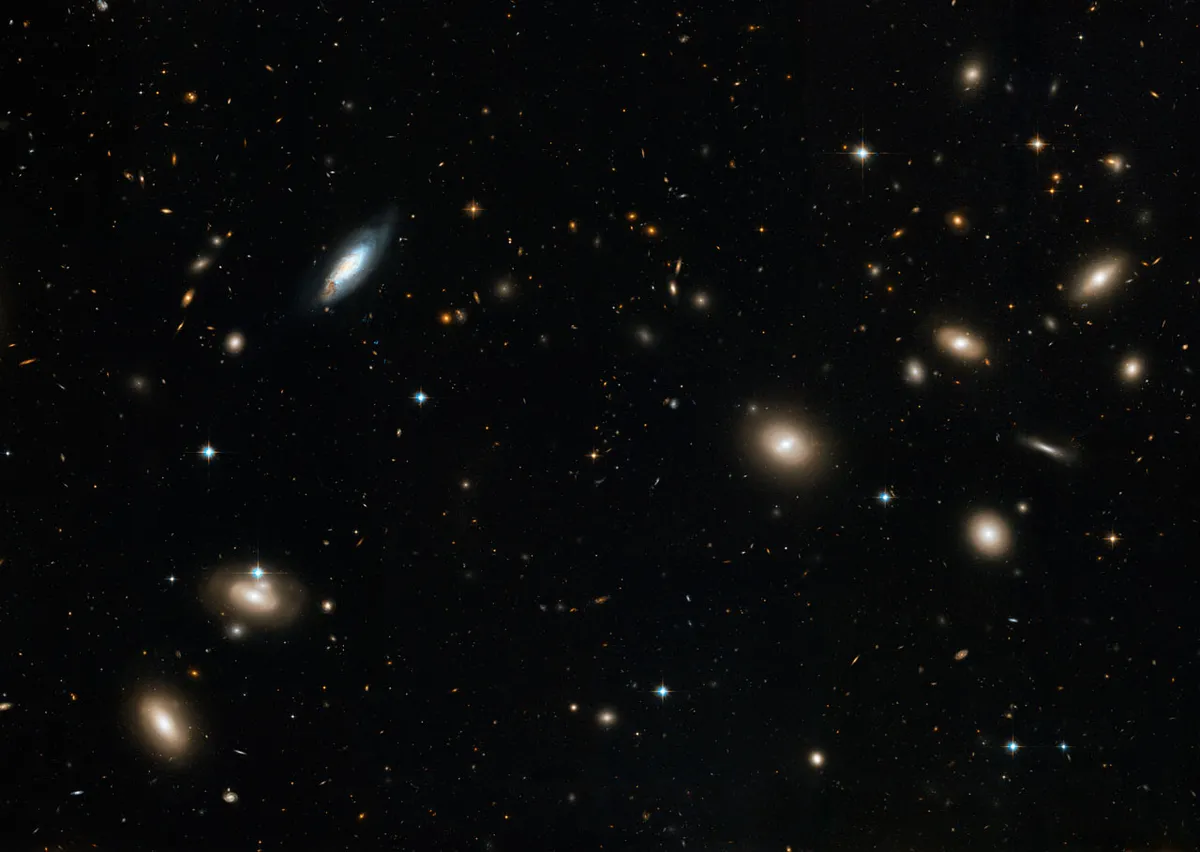The Coma Cluster is a beautiful cluster of galaxies held together by gravity, and is key to the theory of the mysterious substance known as dark matter.
This image of the Coma Cluster was captured by the Dark Energy Camera and shows it as a densely populated cluster of entire galaxies.
The cluster is named for the constellation in which it lies, which is Coma Berenices, representing the hair of Queen Berenice II of Egypt.

Dark matter discovery
Dark matter is an unknown substance that cannot be directly observed, but its existence is inferred due to its effect on visible matter.
Turn back the clocks to 1933 when the famed Swiss astronomer Fritz Zwicky was observing galaxies in the Coma Cluster.
Zwicky calculated the cluster’s mass based on its observable structures, but in his calculations he discovered that the cluster appeared to be missing mass.
By observing the galaxies within the cluster he worked out that they were behaving as though they contained 400 times more mass than they appeared to.
He did this by observing how fast the galaxies in the Coma Cluster were moving.
 Credit: Bettmann / Getty Images" class="wp-image-160819">
Credit: Bettmann / Getty Images" class="wp-image-160819">If those galaxies really did contain as much mass as Zwicky was observing, then they should not have enough gravitational clout to prevent themselves from being flung out into space by the velocity of the cluster's rotation.
The cluster, Zwicky inferred, must be held together by a huge quantity of invisible matter.
This undetectable substance was eventually called 'dark matter'.
Since then, similar observations have been made, including in individual galaxies rather than in galaxy clusters.

A key name in the development of the theory of dark matter is Vera C. Rubin, after whom the Vera Rubin Observatory is named.
In 1970, Rubin and fellow astronomer Kent Ford found evidence of invisible matter in the Andromeda Galaxy, which is the closest major galaxy to our own Milky Way.
The theory of dark matter remains one of the Universe's greatest mysteries, and it's thought that this strange stuff accounts for 85% of all the matter in the Universe.
So without Zwicky's observations of the Coma Cluster and his calculations based on the cluster's movements, astronomers and astrophysicists might never have been sent down the long and winding path of attempting to solve the mystery of dark matter.
Get answers to some of the most common questions about dark matter
